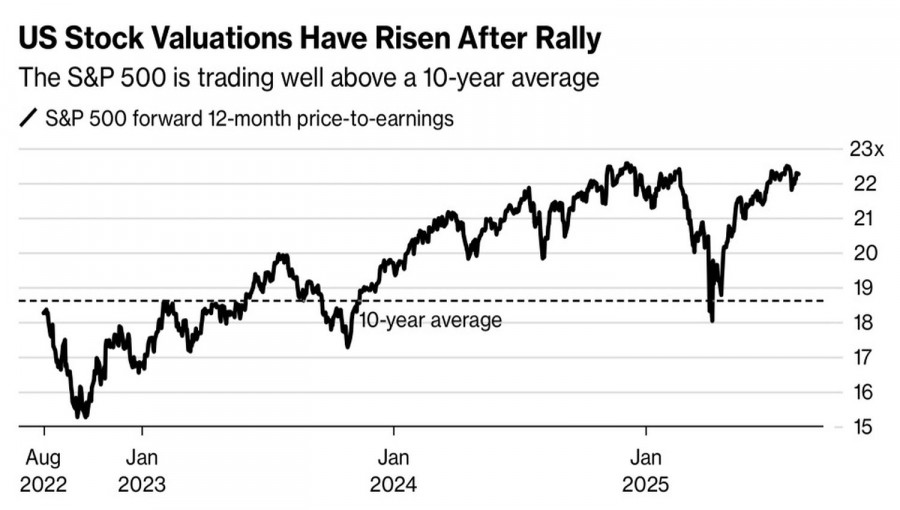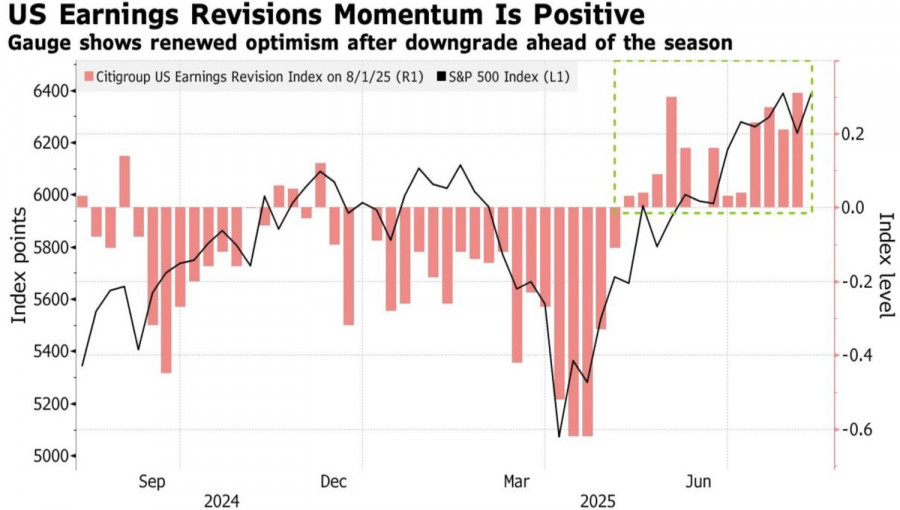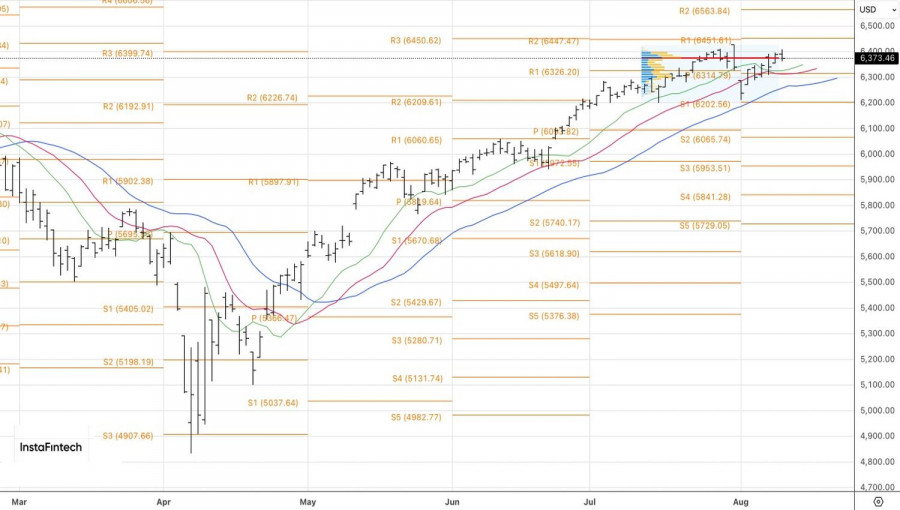Vea también


 12.08.2025 10:18 AM
12.08.2025 10:18 AMOne step forward, two steps back: the S&P 500 retreated after an initial rally. Investors are focusing on positives such as strong corporate earnings, the Fed's intention to cut rates, and the growth of artificial intelligence technologies. However, US inflation data could turn everything upside down. Faster consumer price growth may bring stagflation and recession fears back to the market. In such a scenario, the broad stock index risks entering a pullback.
According to 91% of Bank of America survey respondents, the US market is overvalued. Indeed, the S&P 500's 30% rally from its April lows has pushed the price-to-expected-earnings ratio for the next 12 months to its highest level since the beginning of the year.
P/E ratio trends for S&P 500 companies
Still, only 5% of respondents expect a hard landing for the US economy. The main risks cited are the resumption of trade wars, higher inflation, and turbulence in the bond market.
Nevertheless, Citigroup has raised its year-end 2025 S&P 500 forecast from 6,300 to 6,600, roughly 3% above current levels. The main reason given is the remarkable resilience of US corporations to Donald Trump's tariffs. Eighty-one percent of reporting companies have delivered better results than Wall Street analysts expected — the highest figure in the past seven quarters. This positive trend has allowed Citigroup to revise its earnings estimates upward.
S&P 500 performance and US corporate earnings forecasts
The broad stock index now has a strength it did not possess before. A new generation of investors has emerged whose go-to move is to "buy the dip." They have never experienced the dot-com bust or the global financial crisis — they simply scoop up stocks that have dropped in price during pullbacks. This herd strategy prevents the S&P 500 from falling too far. On the other hand, if a real correction does occur, panic among this new wave of investors could turn it into an avalanche.
Market professionals are well aware that there are reasons for concern. The new head of the BLS could start manipulating statistics in Donald Trump's favor. The president's intentions to seize part of NVIDIA's revenue from chip sales to China, fire Intel's CEO, and personally allocate more than $1 trillion in investments from the EU and China evoke comparisons with state capitalism.
At the same time, the White House's firm desire to bring the Federal Reserve under its control invites comparisons between the US securities market and those of emerging economies. As a result, some investors prefer to play it safe and move their money out of the United States.
Technically, on the daily chart of the S&P 500, the chances of a 1-2-3 reversal pattern forming soon are increasing. Traders aggressively shorting the broad stock index on rallies may end up in the sweet spot. The rest might consider opening shorts from the 6,350 and 6,325 levels.
You have already liked this post today
*El análisis de mercado publicado aquí tiene la finalidad de incrementar su conocimiento, más no darle instrucciones para realizar una operación.



